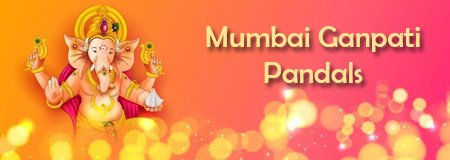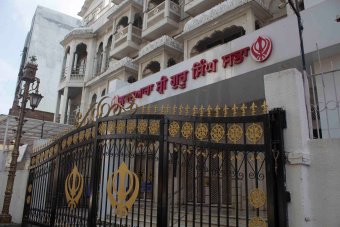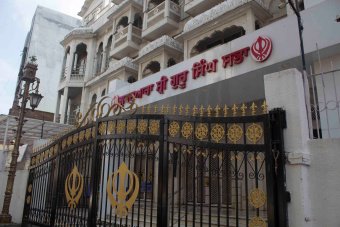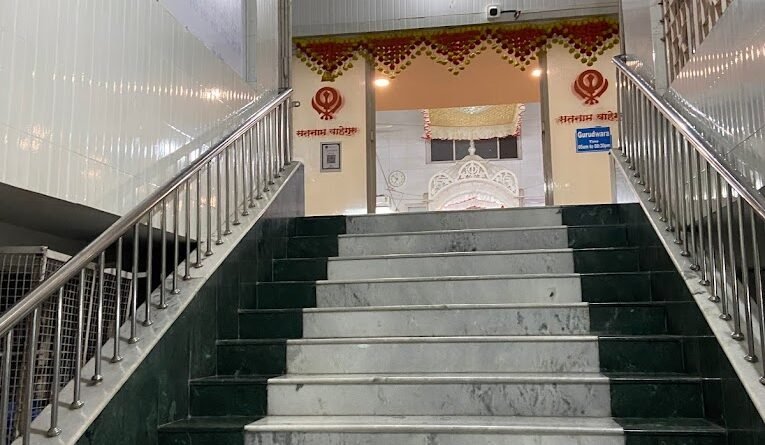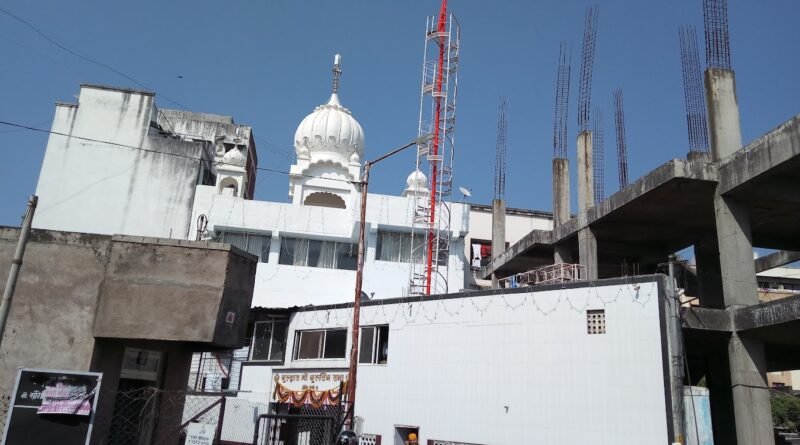Gurudwara Shri Guru Singh Sabha Pune
Established around 1940, this gurudwara is managed by the Gurusingh Sabha Trust.
Gurudwara Shri Guru Singh Sabha is located on Maharana Pratap Road in Ganesh Peth and is managed by the Gurusingh Sabha Trust. The Singh Sabha Movement was a Sikh movement that began in Punjab in the 1870s, and the first Singh sabha was founded in 1873 in Amritsar. Sabhas were subsequently set up in different parts of India to revive the Sikh faith.
This gurudwara, originally built in the 1940s, has undergone periodic restorations and renovations, with multi-faith influences in its architectural style. The entrance to the gurudwara is through an ornate gateway with intricate inlay work that reflects a Mughal influence. The chattris (domes), oriel (a low window that does not touch the base of the building) windows, bracket-supported eaves (protrusion of the roof over the walls of a building), and ornamented friezes (a decorative band above the entrance) all display the influence of Rajput architecture. The outdoor surfaces have been decorated with techniques such as jaratkari (elaborate inlay work), plaster of Paris, tukri (inlay of coloured or mirror glass on gypsum plaster), fresco painting (painting on wet plaster), and pinjra (lattice work).
A tall flag post in the premises bears the Nishan Sahib, which is the triangular Sikh flag. The main building of the gurudwara consists of a Darbar Sahib where the Sikh scripture, Guru Granth Sahib, is placed on a takhat (an elevated throne) in a prominent central position. The ragis (who sing ragas) recite, sing, and explain the verses from the Guru Granth Sahib, in the presence of the congregation. The Darbar Sahib is a huge hall, well-lit with windows, and has a gallery to accommodate the large number of devotees and visitors.
The hall is designed to seat men on one side and women on the other, both at an equal distance from the Guru Granth Sahib as a sign of equality. Worshippers in the hall are offered Karah parshad (a sweet flour-and ghee-based offering), which is usually given into cupped hands by a sewadar (gurudwara volunteer). The Ik Onkar symbol that represents the one supreme reality, meaning ‘God is one’, is embossed on the ceiling of the hall in gold. Ik Onkar is the beginning of the Mul Mantar, which is the opening phrase of the Guru Granth Sahib.
In the langar (community kitchen), vegetarian food is cooked and served by volunteers from the community. People belonging to different faiths sit together to share a common meal. The gurudwara also has temporary accommodation (serais) for visitors or devotees. It serves as a community centre, library, meeting room for discourses, and also a learning centre.
Prayers begin every day with a recitation, called paath, consisting of passages or verses from the Guru Granth Sahib, from 4 am to 7 am. The first passage assigned for each day is known as ‘Hukum Nama’ (order of the day), which preaches ethical values. After this, the ardas prayer is sung in various ragas, followed by katha (religious discourse). The morning prayer ends with a shabad rendition by the ragis or kirtaniya. Evening prayer is performed similarly.
Besides the morning and evening prayers, the following festivals are observed at the gurudwara:
1. Gurupurab. Literally translating to ‘festival’, Gurupurab is an anniversary associated with the lives of the Sikh gurus. Sikhs celebrate 10 Gurupurabs in a year, each of which honours one of the 10 gurus of the Khalsa Panth. Of these the most important ones are the birth anniversaries of Guru Nanak and Guru Govind Singh, and the martyrdom of Guru Arjun Dev and Guru Teg Bahadur.
2. Vaisakhi. Also known as Baisakhi, Vaishakhi, or Vasakhi, this is a historical and religious festival in Hinduism and Sikhism. It is usually celebrated on April 13 or April 14 every year and commemorates the formation of the Khalsa Panth of warriors under Guru Gobind Singh in 1699. Accordingly, Vaisakhi is considered the start of the traditional Sikh New Year.







